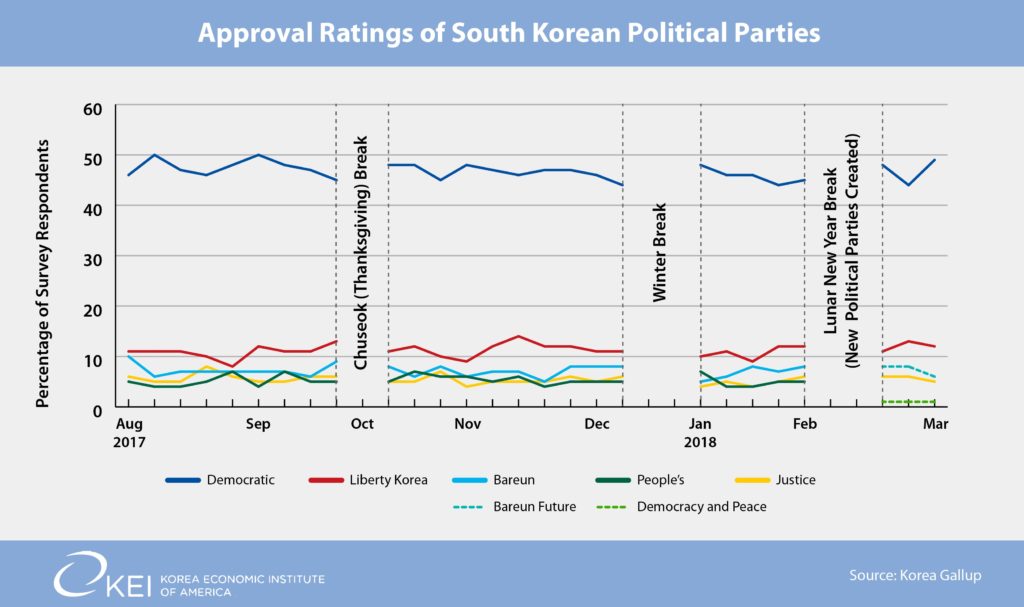The Peninsula
How are South Korean Voters reacting to Newly Created Political Parties?

By Juni Kim
On February 13th, South Korean lawmakers from both the center-left People’s Party and the center-right Bareun Party finalized their merger and launched the new Bareun Mirae Party, which translates literally to the Righteous Future Party. National Assemblyman Yoo Seong-min, one of the new party heads and former Bareun Party presidential candidate, boldly declared, “We will become a party that competes with the incompetent ruling party, and the center-right reformist party that replaces the Liberty Korea Party.” The Bareun Future leadership hopes that the new party’s creation will be a watershed moment in South Korean politics, which has long been dominated by a two-party system and political regionalism.
Although the merger now makes the Bareun Future Party the third largest political party in the National Assembly at 30 members, both originating parties faced their own internal struggles leading up to last month’s merger. Created in the wake of former President Park Geun-hye’s scandal, the Bareun Party struggled to retain its ranks as many of its legislators defected back to the major conservative Liberty Korea Party (LKP) prior to the merger. The party lost its parliamentary negotiating bloc status, which requires 20 legislators, last November when nine of its members left. By the time of the party merger, the Bareun party’s legislative members only numbered in the single digits.
Fractured interests and leadership struggles in the People’s Party also provoked 14 legislators to defect from their party prior to the merger and form the Party for Democracy and Peace (PDP). The PDP is currently seeking to form its own negotiating bloc with the progressive Justice Party, which has the requisite six additional members needed to meet the minimum requirement.
Any expected boost from the merger has yet to materialize in higher approval ratings. In the weeks following the merger, approval ratings for the Bareun Future Party are similar to the Bareun Party’s numbers and slightly better than the People’s Party’s ratings before the merger. In the most recent Korea Gallup polls, the Bareun Future Party had a 6% approval rating, while the most recent Realmeter poll had the party’s approval rating at 8.4%. In comparison, the Bareun Party’s approval rating before the merger mostly fluctuated in the high-single digits while the People’s party in the mid-single digits.

The PDP has had a more difficult time in finding its foothold since its own inception. For the past two weeks, Korea Gallup polls have the party’s approval rating at 1%. The most recent Realmeter numbers have the party at a slightly rosier 2.6%.
As the above chart shows, approval rating struggles are a common challenge for all parties besides the ruling Democratic Party, which is the party of South Korean President Moon Jae-in. Despite maintaining significantly higher approval ratings, the Democratic Party currently does not hold a legislative majority and minor parties like the newly created Bareun Future Party and PDP can still play pivotal roles in the National Assembly agenda.
With the June local elections fast approaching, South Korean voters will be the ultimate factor in deciding the course of the two new minor parties and how much impact they will have in national politics. However, both parties have their work cut for them to convince voters of their platform message ahead of what will almost certainly be a heated election season.
Juni Kim is the Program Manager and Executive Assistant at the Korea Economic Institute of America (KEI). The views expressed here are the author’s alone.
Photo from lets.book’s photostream on flickr Creative Commons.
